Riding With a Broken Wrist
With the golden days of summer well and firmly here, it’s a cyclists paradise - unless, like me, your summer riding plans are sidelined with a wrist fracture. Flash back to 3 weeks ago, I was thinking “that creek crossing is more slippery than it looks” as I plunged into the creek below on my mountain bike.
Now, relegated to the trainer, I can feel those summer adventures slipping away along with my hard-earned fitness. Not content to be off the bike for too long, I’ve come up with an innovation that has made road riding a real possibility:
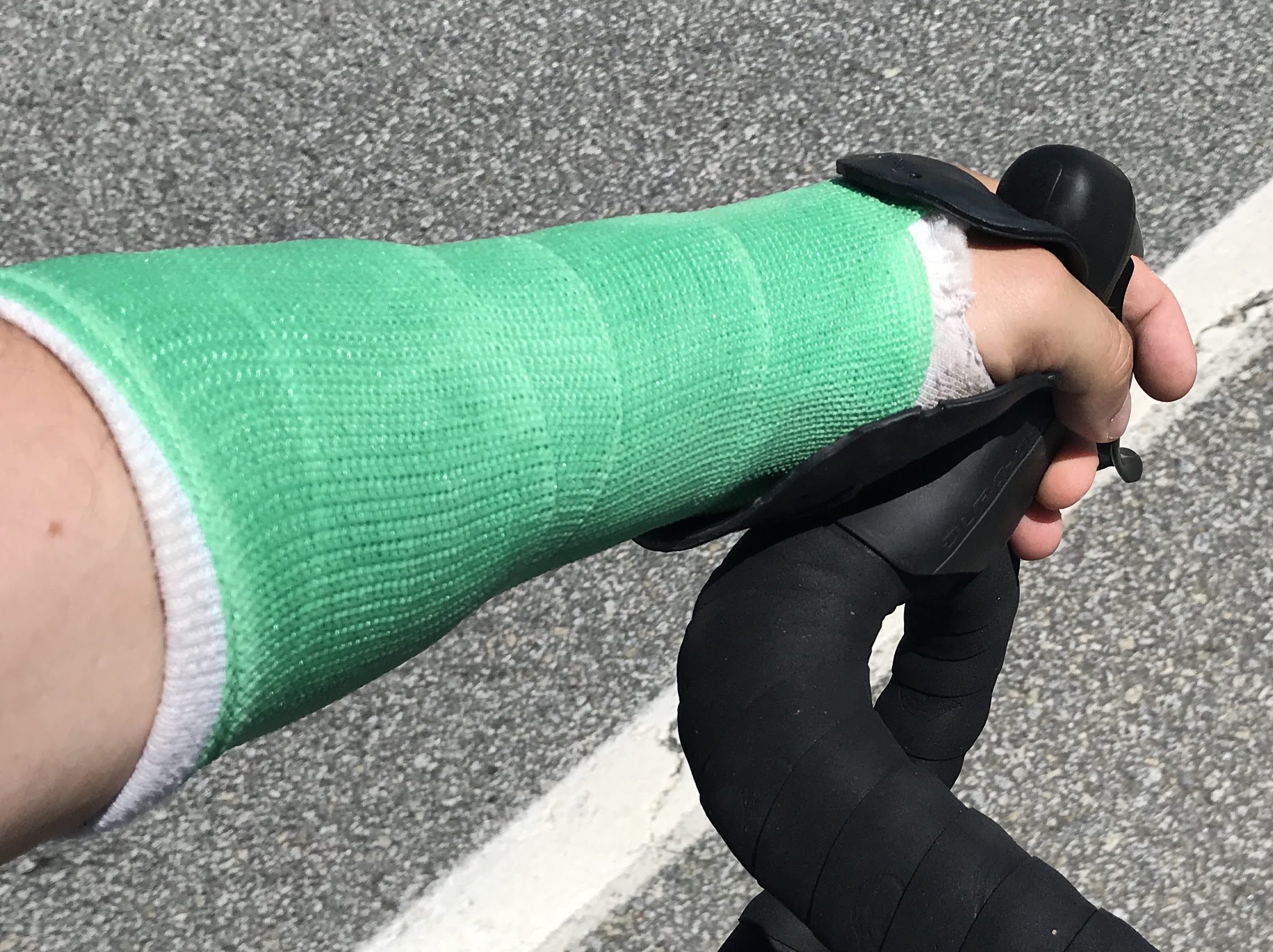
If you look carefully, you’ll notice a black device sitting between my hand and the brake hood. This is what I’ve coined the “cycling splint”.
The cycling splint solves two problems:
Grip
Unlike your hand, a cast won’t sit nicely on the brake hoods. While your hand naturally conforms to the shape of the bars, a cast will sit there at an awkward angle making it impossible to hold the bars securely or comfortably.
The cycling splint is molded on one side to the shape of the brake hood, and on the other to the shape and texture of the cast. This creates a stable interface that is secure and reliable.
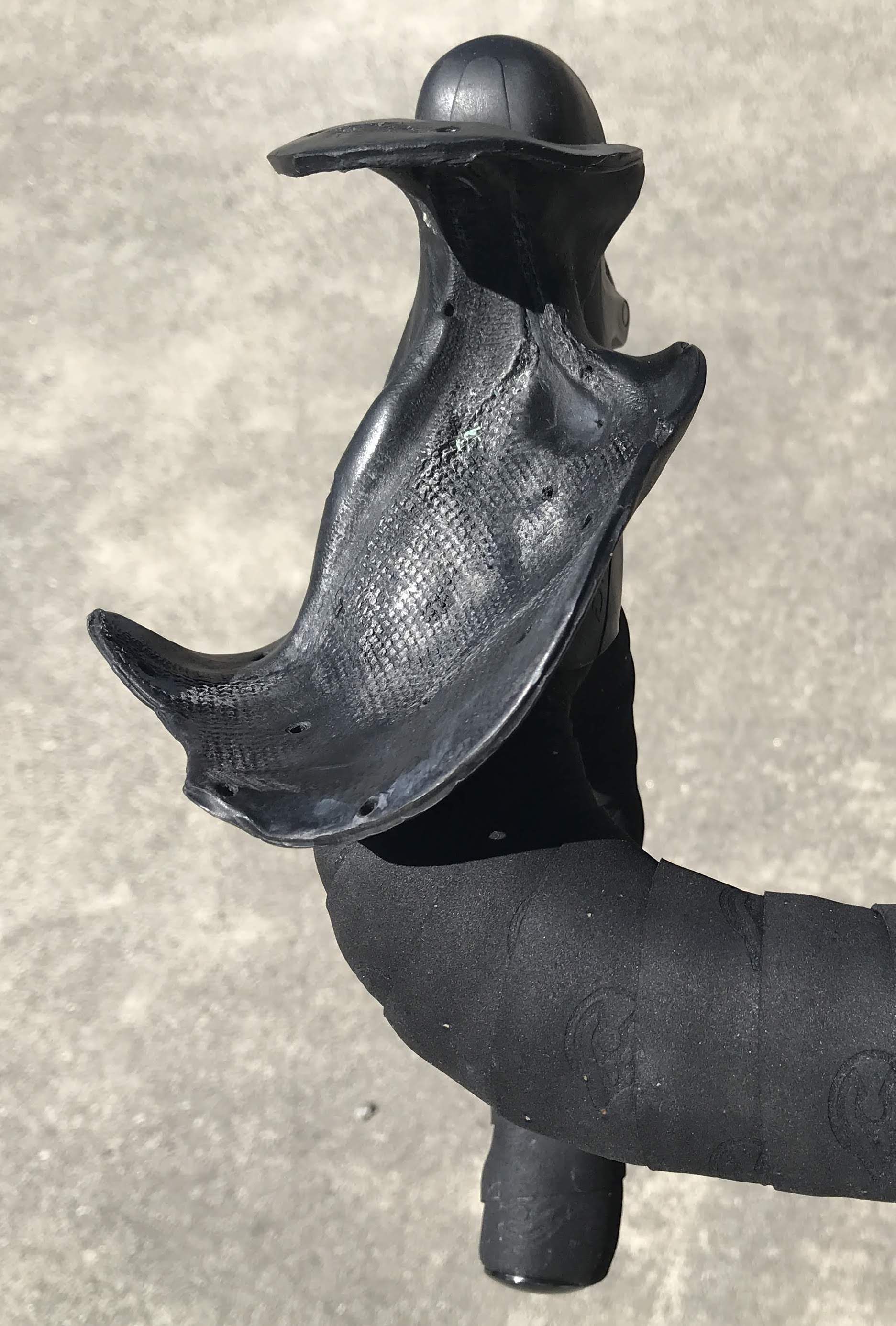
I found that even over rough pavement, gripping the bars was easy and I didn’t have to do anything unusual to remain in control of the bike.
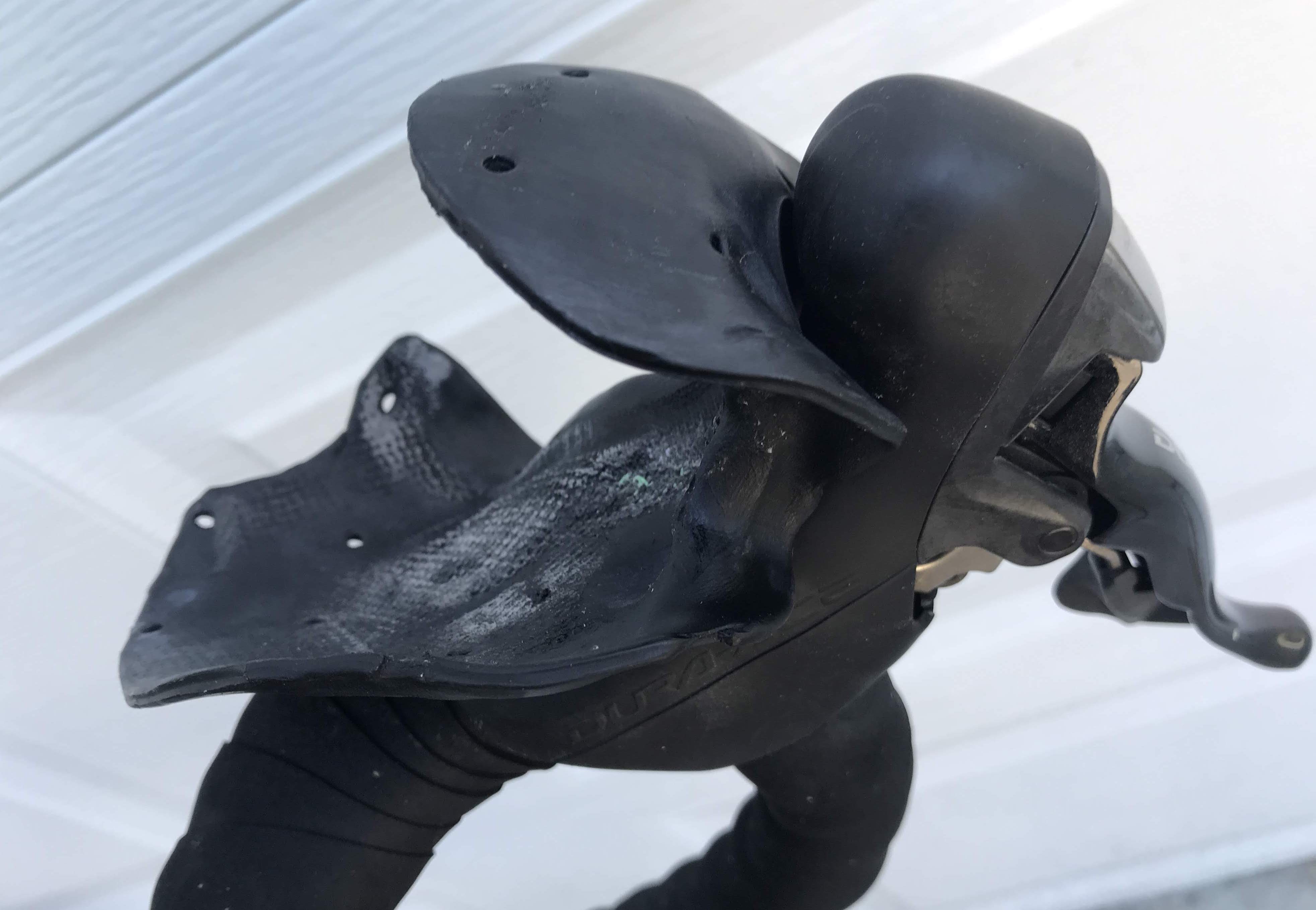
Notice how the splint conforms exactly to the shape of the brake hood on the underside. The top surface of the splint has even taken on the texture of the fiberglass cast, making for a very secure interface.
I’m able to reach and operate the brakes without difficulty. Remarkably, the combination of the splint and cast only elevate my hand above the bars by about 8 millimeters (3/8”), so I found the reach to be fairly natural.
Weight Distribution
Riding on the trainer I discovered that pressure is a problem when riding with a shorty cast. Specifically, I found the cast was cutting painfully in to the fleshy part of my hand between my thumb and forefinger. This section of the cast is very narrow, creating quite a painful situation.
The splint molding process causes the cast to embed itself into the plastic, resulting increased surface area around the narrow part of the cast near base of the thumb. As a result, pressure is distributed more evenly around the thumb and the palm of the hand. The splint delivers welcome pain relief with some minor but tolerable discomfort remaining.
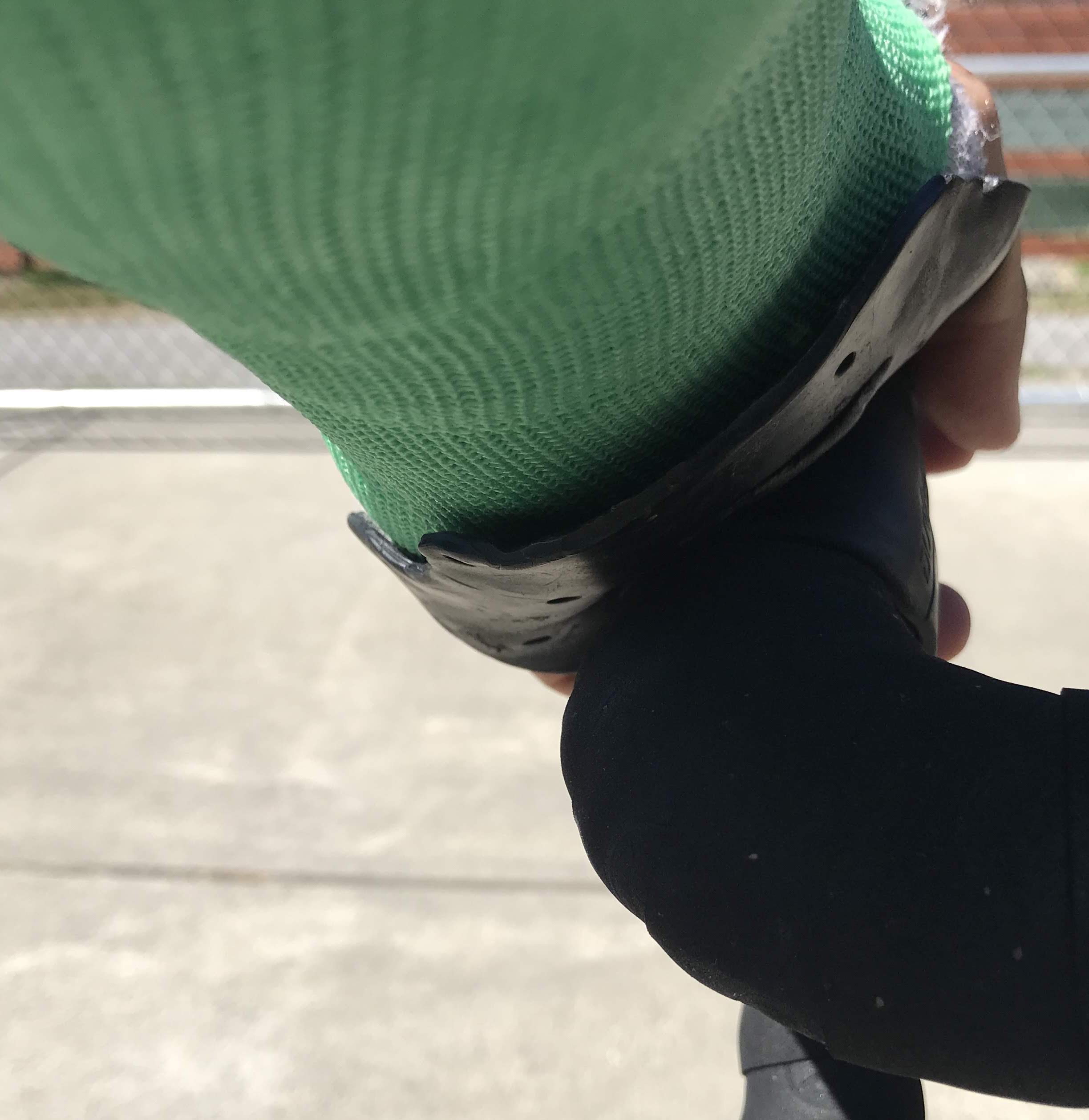
The platform provided by the splint is sufficiently large to avoid pressure points that could potentially damage the fiberglass of the cast.
Riding Experience
My first ride on the splint was a huge success. I set off with some care, unsure of how painful it would be or whether I would be able to control the bike. I found that, though there was some discomfort, it wasn’t painful at all on smooth pavement. Small cracks and bumps in the road caused minor pain, enough for me to unweight in anticipation of upcoming imperfections in the road surface.
Though the splint worked well, I found that I was favoring my injured wrist by placing more weight on my uninjured side. Near the end of the ride I became fatigued in the arms and torso on the uninjured side of my body. A two hour ride is about all I’m able to do at the moment.
Though I have great control over the bike, I’ll be riding solo until the cast comes off. I’d hate to be the one responsible for a crash in a group ride, and I cringe at the thought of crashing with a cast on.
Making a Cycling Splint
Making the cycling splint was a piece of cake. I used splinting thermoplastic, which goes soft after immersing it in 75-80˚C water for a minute or two. It was a simple matter of prototyping the shape with paper, using that as a template to cut out the plastic, then molding it to shape.
To mold the splint, I first shaped the plastic to my casted hand. With the soft plastic in place, I sat on my road bike on the trainer and placed my hands on the brake hoods in a natural position. I used my uninjured hand to hold the soft plastic around my cast as I kept my weight on the brake hood with the splinted hand. After waiting for the plastic to cool in that position, I was done. Success on the first go!
Some tips on molding the splint:
- trim the splinting plastic while it’s soft
- round off any sharp edges when you’re done
- consider drilling a few holes to let the breeze through - that can help to avoid the build-up of moisture due to sweat
- while molding it on the bike, hold your arm at a natural riding angle so that it’s molded in a position that you like
- if it’s not perfect, re-heat and re-mold the splint
The ideal shape is one that supports the hand, and doesn’t come off too easily. Shaping the splint to slightly wrap around the curvature of the cast will enable you to lift your hand off the bar without fear of losing the splint.
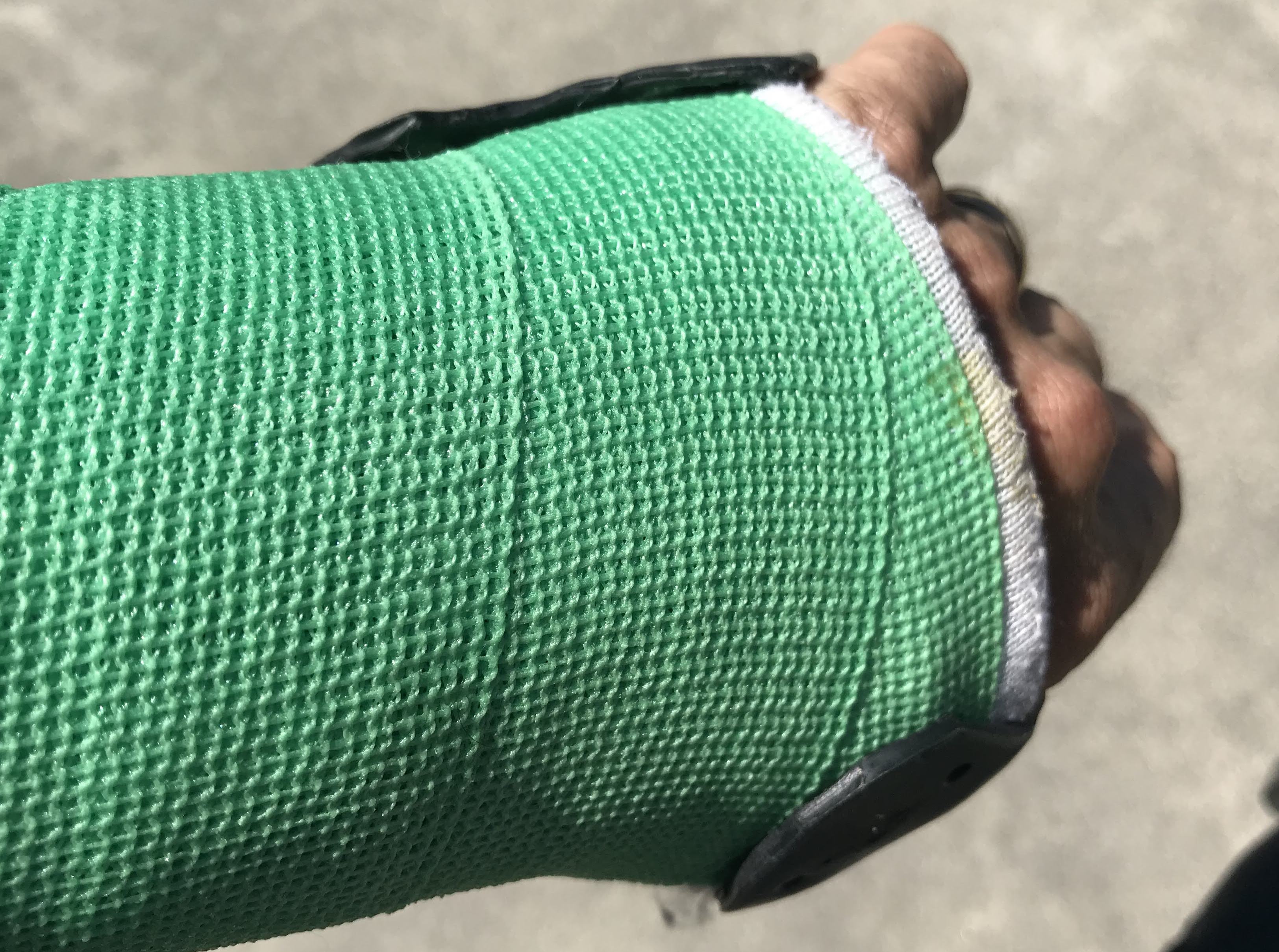
Materials
- Splinting thermoplastic can be bought online. Go for 1/8” or 3.5mm thickness for adequate stiffness.
- Thermometer to obtain desired water temperature. I used a digital meat thermometer.
A Word of Caution
Be sure to consult with your physician before riding your bike after a fracture. To help the physician understand what you have in mind, be specific about cycling being weight-bearing and the kinds of vibrations that you expect to encounter through the hands. Only with proper medical advice should you consider heading out on your bike.
Recent Posts
- Inside the Vuelta from Team Visma | Lease a Bike
- 2023 Year In Review
- Now in 12 Languages!
- Official Supplier to Team Visma | Lease a Bike
- How Jumbo-Visma Uses Tech and Put Wout in Yellow at the Tour De France
- Dark Sky 2023 Availability Update
- How Jumbo Visma Put Vos Into Yellow at the Tour De France Femmes
- Bike Commuter Weather Forecasts
- VeloNews: One of the handiest cycling apps just got better
- All Articles
subscribe via RSS